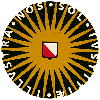Call for papers
The general theme of this workshop is the design of the noun phrase. In particular, we hope to further our insight into the atoms (building blocks) and laws (rule systems) of the noun phrase, by approaching this subject matter from a micro-comparative, a macro-comparative and a diachronic perspective. A second important question that will be addressed concerns the issue of cross-categorial symmetry: to what extent is the nominal system comparable to the sentential system (or other phrasal systems), e.g. with respect to the typology of the computational rules that are involved or the way in which morphosyntactic diversity is encoded in the atoms?
More specifically, this workshop wants to address the following central research questions :
-
What are the atoms of the noun phrase? That is, what are the ‘building blocks’ (i.e. categories) within the nominal domain that through the combinatorics of the computational system yield a nominal projection ? A central question that needs to be dealt with concerns the inventory of so-called functional categories (and their projections). Thus far, research on the noun phrase has argued for the existence of functional categories such as Num(P), Pos(P), and D(P). The question arises as to whether the set of (functional) atoms is richer, and consequently whether the structure of the nominal system is more articulate than is generally assumed thus far. Alternatively, one might raise the question as to whether the inventory of functional atoms is too rich as it is generally assumed to be. In that case, the question arises where unification of apparent atoms is possible. In short : What is the inventory of functional atoms within the noun phrase ?
-
What are the laws (rules) of the noun phrase ? That is, to what extent are nominal structures the result of simple External Merge (i.e. the junction of two categories) ? Or is the displacement property (so-called Internal Merge), which is widely attested in the clausal system, also attested within the nominal system ? A related question concerns the construction-specificity of the rule system , i.e. to what extent are ‘types of nominal constructions’ (e.g. N of N-constructions, pseudopartitives, partitives, possessives, appositives, head-argument-constructions) the result of (language specific) and construction-specific rules? Or do they result from more general, construction-independent rule formats for structure building ?
-
To what extent is the syntax of the noun phrase similar to/different from the syntax of the sentence (or, for that matter, other phrasal domains)? Ever since Chomsky (1970) and Jackendoff (1977), the search for cross-categorial parallelism has been an important heuristic strategy in syntactic theory (see also Abney 1987, Szabolcsi 1987). The question arises whether symmetry is found between the clausal system and the nominal system. For example, is the typology of displacement as attested in the clausal domain (head movement, phrasal A-movement, phrasal A-bar movement) also found in the nominal system ?
-
What are the atoms of linguistic diversity, i.e. the parameters, within the noun phrase, and how are they set (i.e. what is their value)? This question about the ‘setting of parameters’ can be examined from a number of comparative perspectives : (i) a synchronic microvariation (i.e. cross-dialectal) perspective, (ii) a diachronic perspective, (iii) a macrovariation perspective.
For this workshop we welcome papers on any topic related to the issues raised above.
abstract guidelines
Abstracts should not exceed two pages, including data, references and diagrams. Abstracts should be typed in at least 11-point font, with one-inch margins (letter-size; 8"1/2 by 11" or A4) and a maximum of 50 lines of text per page. Abstracts must be anonymous and submissions are limited to 1 individual and 1 joint abstract per author.
Only electronic submissions will be accepted. Send name, affiliation, e-mail, mailing address and title of the paper in the body of the message. The anonymous abstract should be sent as an attachment, and only abstracts in pdf-format will be accepted. Abstracts should be sent to marjo.vankoppen@let.uu.nl.
Accepted papers are allotted 30 minutes for presentation plus 10 minutes for discussion.
important dates
First call for papers: March 24, 2009
Second call for papers: May 1, 2009
Submission deadline: May 15, 2009
Notification of acceptance: June 1, 2009


